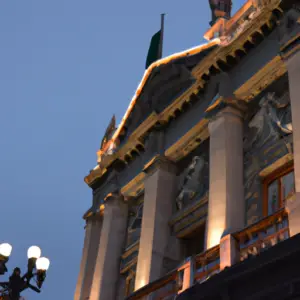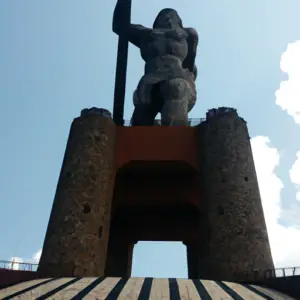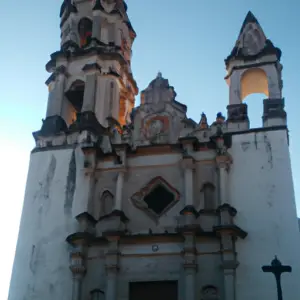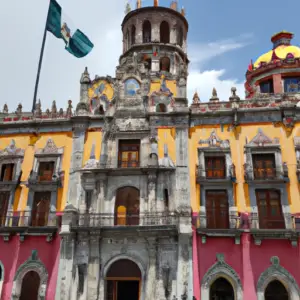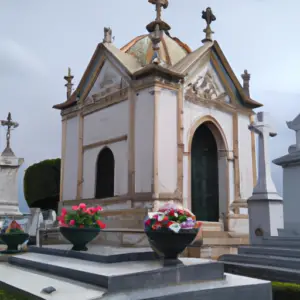10 Best Famous Monument in Guanajuato | Historical Building in Guanajuato

- By
- Aparna Patel
- |
- 15 May, 2023
- |
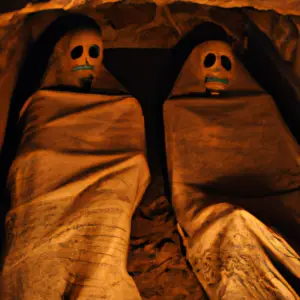
Guanajuato, the heart of colonial Mexico, is home to a fascinating history and boasts numerous iconic monuments from the colonial period.
From grandiose churches to fascinating historical buildings, Guanajuato is filled with a variety of awe-inspiring monuments that tell the story of its past. In this article, we will explore some of the best famous monuments in Guanajuato and go into detail about their historical significance.
10 Famous Monuments and Historical Buildings To Visit In Guanajuato
1. Callejon del Beso
Callejon del Beso (Aisle of the Kiss) is an enchanting cobblestone alleyway in the Barrio de Jalatlaco in Guanajuato, Mexico. It is a narrow passageway that stretches for about two blocks and is lined with colorful hacienda-style homes. At the end of the alleyway, two balconies on opposite sides of the street stand just a few feet apart in a breath-taking embrace. The alleyway has become something of a romantic icon in the city and people often steal kisses beneath the balconies.
Legend has it that the story of Callejon del Beso began in the late 1780’s with a love affair between two classic youngsters: a wealthy Spanish nobleman and a beautiful girl. Her father, maddened by their relationship, separated them by having one daughter quickly married—the story goes, in less than 24 hours—to another man.
Supposedly, the two lovers were so distraught that they decided to make a last desperate attempt to see each other one final time by leaning over their respective balconies. Before they could part one final time, they locked lips in a kiss that was so passionate that it is said the walls of the alley still echo their love and pain.
2. Mummies of Guanajuato
The Mummies of Guanajuato are a group of naturally mummified bodies interred during a cholera outbreak in 1833 in Guanajuato, Mexico. After the outbreak was over, families were unable to pay the tax for the deceased person’s burial, so the city’s cemetery ran out of space. As a result, officials began to exhume the oldest graves to make space, and found that many of the bodies had become naturally mummified due to the conditions in the cemetery.
The Mummies of Guanajuato are now preserved in a museum dedicated to the mummies. The museum displays the mummies alongside artifacts and artwork related to their lives. The mummies are a popular tourist attraction, with thousands of people each year visiting the museum to learn more about the mysterious mummies.
Visitors to the museum can view the mummies up close, learn about their lives, and explore the museum’s extensive collection of artifacts and artwork. The museum also provides educational programs and special events related to the mummies and the city of Guanajuato.
3. Museo Casa Diego Rivera
The Museo Casa Diego Rivera is a museum located in Guanajuato, Guanajuato, Mexico. It is dedicated to the life and works of the celebrated Mexican muralist, Diego Rivera.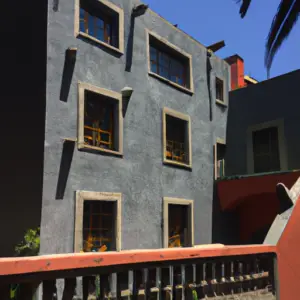
The museum was established in 1970 and houses a permanent collection of works and artifacts related to the life of the Mexican artist. The museum also hosts special exhibitions, lectures, and workshops.
Visitors can explore rooms filled with paintings, sketches, and personal artifacts of the artist, as well as a library and archive of documents and photographs. The museum is also home to the Diego Rivera Institute, a center for the research and study of the artist. The museum is open to the public and admission is free.
4. Parroquia de Nuestra Señora de Guanajuato
The Parroquia de Nuestra Señora de Guanajuato is the main parish church located in the city of Guanajuato in the Mexican state of Guanajuato. Construction began in 1659 and the church was completed in 1741.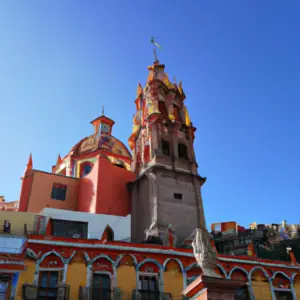
It was declared a historic monument in 1936 and is home to the iconic image of Nuestra Señora de Guanajuato. This image, thought to be of the mystery of St. Mary of the Annunciation, is believed to have arrived in Guanajuato from Spain in 1536.
The Parroquia de Nuestra Señora de Guanajuato has long been an important religious center in Guanajuato and is widely considered the patron saint of the city. The temple’s characteristic Mexican Churrigueresque style is adored by locals and visitors alike. It contains beautiful frescoes, Baroque altars decorated with gold, and a tabernacle lined with silver.
The church also houses a statue of the Virgin Mary dating back to 1658 which was taken to Spain in 1686 by Bishop Juan de Palafox y Mendoza and returned to Guanajuato in 1741. The 18th-century Punta de la Fundación de Guanajuato is also preserved in the main nave. The Parroquia de Nuestra Señora de Guanajuato continues to be one of the city’s most exclusive places of worship.
5. Monumento a Cristo Rey
The Monumento a Cristo Rey (Monument to Christ the King) is an iconic 93 foot monumental sculpture and one of the most recognizable landmarks in the city of Guanajuato, Mexico. It was erected on December 25, 1938 as part of the preparations for the centenary celebration of the Mexican Constitution and has become a symbol of the state of Guanajuato.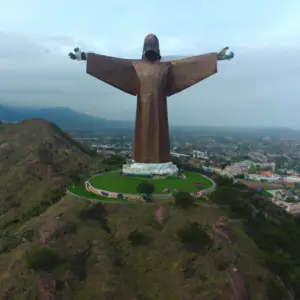
The statue of Christ is depicted with arms outstretched as if to embrace the city and is visible from different areas of Guanajuato including the Valley of Guanajuato, the Historic Center and the Basilica of the Virgin of Guanajuato. The monument is located in a small park that is open year-round and features kiosks where visitors can purchase souvenirs. Every December there is a commemoration event in the park that includes music, performances, and a firework display.
6. Teatro Juárez
Teatro Juárez is the most famous and iconic theatre in the beautiful state of Guanajuato in Mexico. It is located in the heart of the city, just off of the bustling Alameda García Covarrubias, and is a historic landmark of the city. The theatre was built in 1872 and has served as an entertainment venue for the citizens of Guanajuato ever since.
It features a number of performances from local and international acts and hosts a variety of different events throughout the year, including operas, concerts, ballets, plays and more. It also serves as an art gallery, museum and gallery for many of the famous Mexican artists.
7. Estatua de El Pipila
The Estatua de El Pipila is a monument located in the city of Guanajuato, Mexico. It was created in 1957 by sculptor Ramón Martinez Suzano, and is a tribute to the patriot and hero El Pípila. He was an iconic figure in Mexico, famous for his heroic and selfless actions during the Mexican War of Independence from 1810-1821.
El Pípila bravely broke through the gates of the Alhóndiga de Granaditas, allowing for the eventual victory of Mexico’s independence from Spain.
The statue is located at the entrance to the city of Guanajuato from the city’s main Avenida El Pípila. It stands atop a marble plinth, with the words ‘El Pípila’ carved in large letters at the base. The 10 metre stone figure of El Pípila is modeled with a flaming torch in one hand, and a cart wheel in the other. The statue has become an iconic figure in Guanajuato and is widely considered to be a symbol of Mexican patriotism.
8. Templo de San Cayetano
The Templo de San Cayetano is a Catholic church located in the city of Guanajuato, in the Mexican state of Guanajuato. It was built in 1777 and is dedicated to San Cayetano, the patron saint of labor and workers. The facade of the church is Baroque in style, while the interior is of a neoclassical style.
The church is located in the center of the city and is one of the most popular churches in Guanajuato. Inside the church, there is a magnificent altar and a collection of old religious images and sculptures.
Visitors can also admire the church’s ornate frescoes, which depict biblical scenes. The Templo de San Cayetano is a popular destination for local and international visitors alike, who come to admire its beauty and historic importance.
9. Palacio de Gobierno de Guanajuato
The Palacio de Gobierno de Guanajuato is a historic building located in the City of Guanajuato, Mexico. Built in the neoclassical style, it serves as the seat of government for the state of Guanajuato. The palace was designed by architect Joaquin de Sancha Gonzalez y Medina in 1864.
It is made up of two story high sections, with a total of eight sections around a central patio. The ground floor is adorned with large murals depicting events in the history of the state, painted between 1878 and the early 1900s.
The palace is home to the state’s legislative chamber, chambers for the executive and judicial branches, and various offices and archives. The main entrance is flanked by two monoliths with cannonballs, which is a remnant of the War of Independence. The palace also houses an historical statue of Ignacio Allende. The palace is open to visitors and offers regular guided tours.
10. Panteón de Belén
Panteón de Belén is located in the colonial city of Guanajuato, located in the central region of the state of Guanajuato in Mexico. It was constructed between the years 1795 and 1797 and is the final resting place for several of the city’s most important citizens.
The Baroque-style architecture is quite breath-taking and exemplifies the historic beauty of the city. The Panteón de Belén is one of the most visited and iconic landmarks in the city. It is open every day of the year and free admission is available.
Search Posts
Latest posts
-
4 Mar, 2024
Why would you wrap your luggage in plastic?
-
4 Mar, 2024
How can I do a "broad" search for flights?
Popular posts
-
5 Mar, 2024
Why prohibit engine braking?
-
5 Mar, 2024
How to avoid drinking vodka?
